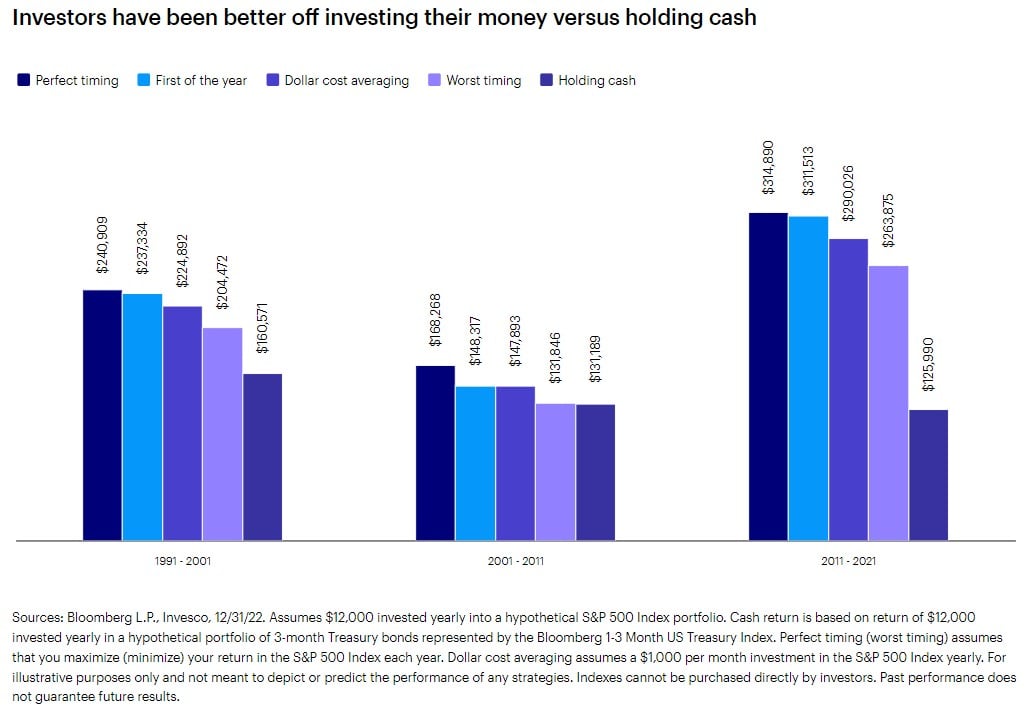Chart of the Day: Even Worst Timing is Better than Cash

Learn about our Refer-a-Friend Program. Terms and conditions apply.

Today’s Chart of the Day and commentary is from Invesco and shows three instances when cash balances were high — following the 1991 and 2002 recessions, the 2008 Global Financial Crisis, and the 2009 European debt crisis — and calculates what $12,000 invested yearly in the stock market for 10 years would have been worth.Below are four investing scenarios:
These scenarios are compared to the returns an investor would have if they simply continued to hold cash (calculated using the Bloomberg 1 - 3 Month US Treasury Index).
In each instance, investors would have been better off investing their money in stocks versus holding cash — regardless of how they did it. Investing a lump sum at the first of the year and dollar cost averaging were both sound strategies. While all investors would like perfect timing, even having the worst timing each year still outperformed cash.

Samuel serves as Senior Vice President, Chief Investment Officer for the Crews family of banks. He manages the individual investment holdings of his clients, including individuals, families, foundations, and institutions throughout the State of Florida. Samuel has been involved in banking since 1996 and has more than 20 years experience working in wealth management.
Investments are not a deposit or other obligation of, or guaranteed by, the bank, are not FDIC insured, not insured by any federal government agency, and are subject to investment risks, including possible loss of principal.

